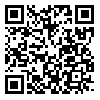BibTeX | RIS | EndNote | Medlars | ProCite | Reference Manager | RefWorks
Send citation to:
URL: http://tumj.tums.ac.ir/article-1-7885-en.html

 , Fereydoun Siassi1
, Fereydoun Siassi1 
 , Mostafa Qorbani2
, Mostafa Qorbani2 
 , Fariba Koohdani3
, Fariba Koohdani3 
 , Negin Farasati1
, Negin Farasati1 
 , Gity Sotoudeh *
, Gity Sotoudeh * 
 4
4
2- Department of Community Medicine, School of Public Health, Alborz University of Medical Sciences, Karaj, Iran. Department of Cellular-Molecular Nutrition, School of Nutritional Sciences and Dietetics, Tehran University of Medical Sciences, Tehran, Iran.
3- Department of Cellular-Molecular Nutrition, School of Nutritional Sciences and Dietetics, Tehran University of Medical Sciences, Tehran, Iran.
4- Department of Community Nutrition, School of Nutritional Sciences and Dietetics, Tehran University of Medical Sciences, Tehran, Iran. ,
Background: Nurses are prone to continuous stress due to their job situation that lead to many physical and psychological disorders. this job stress also affects their personal life and career. The aim of this study was to evaluate the association between major dietary patterns and anthropometry in nurses.
Methods: We conducted a cross-sectional study from February to October 2014. In this cross-sectional study, 320 female nurses were selected randomly from eight hospitals affiliated to Tehran University of Medical Sciences in 2014. This research project carried out with the code 24371 Tehran University of Medical Sciences in Research Ethics Committee approved. Anthropometry and blood pressure measurement was done. Data on physical activity were obtained using the short version of international physical activity questionnaire.
|
Results: Three dietary patterns were identified using factor analysis and labeled: healthy, unhealthy and traditional. The healthy dietary pattern score was significantly related to weight and body mass index (BMI) of participants after adjusting for confounders (P=0.05, P=0.01, respectively). There was not significant association between the unhealthy dietary pattern and anthropometry measures. The unhealthy dietary pattern score was inversely related to systolic and diastolic blood pressure after adjusting for confounders (P=0.001, P=0.03, respectively). There was not any significant association between the traditional dietary pattern and anthropometry and blood pressure measures (P>0.05). Conclusion: According to the result of this study, three dietary patterns including, healthy, unhealthy and traditional were identified in nurses. The healthy dietary pattern was associated with weight and BMI and the unhealthy dietary pattern was inversely associated with blood pressure. The traditional dietary pattern had no effect on anthropometry and blood pressure measures. |
| Rights and permissions | |
 |
This work is licensed under a Creative Commons Attribution-NonCommercial 4.0 International License. |



